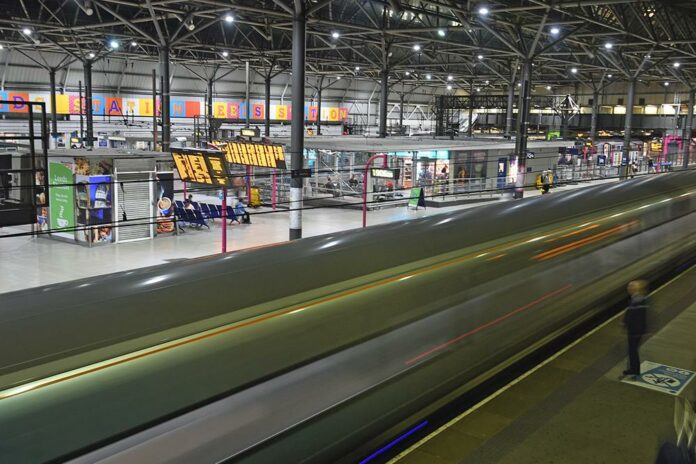Passengers can be a lot more confident about travelling by train safely according to RSSB – with the risk of COVID-19 infection being less than 0.01% on an average journey.
Rail safety experts worry that people may be assuming the roads offer a less risky alternative during the pandemic, when in fact trains are safer and greener.
Analysis by the rail safety body has shown the risk of contracting COVID-19 while travelling by train is about 1 in 11,000 journeys. This is equivalent to a chance of less than 0.01%, based on an hour-long train journey in a carriage with no social distancing or face coverings.
The report also shows that the risk more than halves if passengers wear a face covering. These have been mandatory when travelling by train since June, unless exempt.
On safety alone, for an individual traveller per kilometre travelled, the car is 25 times less safe than rail. Cycling is 403 times, walking is 456 times, and travelling by motorcycle is 1,620 times less safe.
When the effect of the virus is taken into account and compared against the average road safety risk, the risks are almost the same (road is 1.14 times the risk of rail). Across all transport modes risks of catching the virus are very low, and certainly tolerable. Experts accept that most people will want to use a combination of different modes of transport to get around.
The infection risk findings have now been published by RSSB and verified by the Chief Scientific Adviser’s team at Department for Transport in collaboration with the Defence Science and Technology Laboratory.*
Public transport had been perceived as an infection hotspot due to the vast number of people being in a close proximity. However, research is challenging this, showing that passengers are not as prone to infection as previously assumed, certainly not given the current underlying national infection rates, and people generally conforming with government COVID-19 guidelines.
To analyse the risk, RSSB’s model took a typical passenger journey focussing on the time spent waiting on platforms, boarding and alighting, and the time spent on the train itself.
Researchers then worked with crowd simulation software by Crowd Dynamics, combining data from train operator LNER and infection risk data from the Office of National Statistics (ONS) to get informed estimates of the risk.
The work forms part of a bigger programme of work led by RSSB to help policy makers understand the relationships between rail’s contribution to economic growth and the risks of infection by encouraging more passengers to use train services.
While some risks identified are obviously higher than if there were no virus at all, RSSB believes they are small enough for people to be able to use trains for both work and leisure with no major concerns. That is provided passengers adhere to government instructions on the use of face coverings.
RSSB’s Director of System Safety and Health, Ali Chegini, said: “As more people return to schools and offices over the next few weeks, people rightly want to feel confident travelling by train. Our analysis suggests going by road won’t offer increased level of overall safety, so the virus shouldn’t influence whether or not people choose to travel by train.
“In a world with no virus, the risk would be even lower, but our data shows that even with the virus still present in the community, the risk is low enough and tolerable.
“People who rely on trains for their livelihoods, education and leisure can travel safely, following guidance from the train operators, and wearing a face covering unless exempt.”
Experts at RSSB have also emphasised that this evaluation could change as new information becomes available, or if the overall risk of infection across the country were to change. Further work is being undertaken on different scenarios involving different trains and will be released as soon as it’s available. This could lead to these initial figures being revised.
RSSB has recently joined an alliance of partners called Emergent Alliance, formed by organisations from all industries who have pledged to share data and expertise to collaboratively build the economic resilience and innovation of GB industries for a better tomorrow and support recovery from the COVID-19 outbreak.
* This work has been peer reviewed by a team from the Chief Scientific Adviser’s office at DfT and a team from DSTL. While this is not an endorsement or approval of RSSB’s work, it does provide verification. Essentially, it is an independent review to confirm that RSSB’s methodology and assumptions are consistent with the scope and objectives that RSSB set out to address. The conclusion derived from this review confirms that RSSB has followed a correct process and that it was truthful in deriving an answer to the question posed.
Photo credit: Rail Delivery Group
For today’s rail news from railbusinessdaily.com click here.







































 0113 2082620
0113 2082620 info@railbusinessdaily.com
info@railbusinessdaily.com 15 Mariner Court, Wakefield WF4 3FL
15 Mariner Court, Wakefield WF4 3FL

